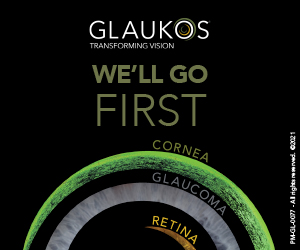OCT upgrade for the Oculus Pentacam
The newly unveiled Oculus Pentacam Cornea OCT is not so much an upgrade to the popular Oculus Pentacam as a whole new system, said Designs for Vision’s Gian Victoria at RANZCO in Adelaide. “It’s a different device really, because the Pentacam is primarily a Scheimpflug camera, while this uses OCT technology. So for doctors who have been trying to get epithelial mapping, they can now do this.”
The Oculus Pentacam Cornea OCT was primarily developed following feedback from cornea specialists, said Victoria. “The original Pentacam is great for keratoconus screening, biometry and corneal wavefront aberrometry, that really benefits cataract surgeons and optometrists, but we believe the Cornea OCT is more attractive for cornea surgeons, because with this they can see the fine detail of the cornea on a cellular level.”
Unveiled in September in Barcelona at the European Society of Cataract and Refractive Surgeons 2024 Congress, the new Oculus Pentacam Cornea OCT combines Scheimpflug technology with the world’s first pericentric OCT scanning system, offering a new level of detail in visualising corneal anomalies, said Oculus in its launch material. “In a matter of only one second, cornea specialists are provided with a Scheimpflug image of the anterior segment and the ultra-high resolution OCT images of the cornea. Both measurements are taken simultaneously at exactly the same locations, allowing for immediate and detailed visualisation of all anomalies.
“This powerful synergy allows for comprehensive corneal assessment, providing precise measurements of all refractive layers and detailed visualisation of sublayers, crucial for early detection, optimal surgical planning and postoperative care.”
The Oculus Pentacam Cornea OCT should be available in this part of the world from March next year, said Victoria.





















